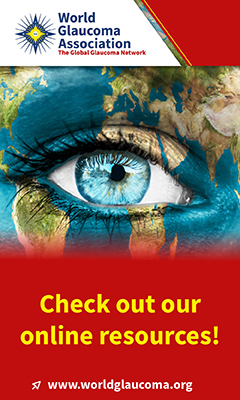advertisement

Abstract #112808 Published in IGR 24-3
Improvement of objective ocular redness measured with Keratograph 5M in glaucoma patients after instilling brimonidine drops
Montolío-Marzo E; Montolío-Marzo E; Fernández-Narros R; Morales-Fernández L; García-Bella J; Sáenz-Francés F; García-Feijoo J; Martínez-de-la-Casa JMEuropean Journal of Ophthalmology 2023; 0: 11206721231199122
OBJECTIVE: To compare objective ocular redness measured using OCULUS Keratograph 5 M before and after 0.2% brimonidine instillation in glaucoma patients under topical hypotensive treatment. METHODS: 60 eyes from 60 subjects diagnosed with glaucoma or ocular hypertension under hypotensive ocular topical treatment were analyzed. Basal Ophthalmological examination was performed.Outcome variables were OCULUS Keratograph 5 M redness scores (RS) before and after 0.2% brimonidine instillation; overall, bulbar temporal (BT), bulbar nasal (BN), limbar temporal (LT), and limbar nasal (LN); non-invasive average tear film breakup time (Nia-BUT), non-invasive first tear film breakup time (Nif-BUT) and meibography. In addition, the following clinical data were collected: intraocular pressure, type, duration, amount, and preservatives/or not of hypotensive treatment, fluorescein corneal staining score and lower tear meniscus height. RESULTS: All eyes were under topical medication. All redness scores were reduced after brimonidine instillation, mean RS differences were BT 0.82 ± 0.62, BN hyperemia 1.03 ± 0.55, LN hyperemia 0.84 ± 0.49, LT hyperemia 0.71 ± 0.50 and total hyperemia 0.91 ± 0.52 (all p < 0.001). 30 min after brimonidine instillation mean overall RS reduction was 47.97 ± 12.39% (p < 0.001) and after 1 h there was a persistent reduction of overall RS of 45.92 ± 14.27% (p < 0.001). Hyperemia reduction was significant and comparable between preservative and preservative-free group 0.12 ± 0.14 (p > 0.392) and between patient with combination therapy and monotherapy 0.16 ± 0.14 (p > 0.258). CONCLUSION: A significant reduction of conjunctival hyperemia was objectively found in glaucoma patients under topical hypotensive treatment before and after brimonidine instillation. Its fast and long-lasting effect may be useful preoperatively in glaucoma patients to reduce intraoperative bleeding and associated complications.
Ophthalmology Unit, Department of Ophthalmology and ORL, Faculty of Medicine, Hospital Clínico San-Carlos, Universidad Complutense de Madrid, Instituto de Investigación Sanitaria del Hospital Clínico San-Carlos (IdISSC), Madrid, Spain.
Full article
